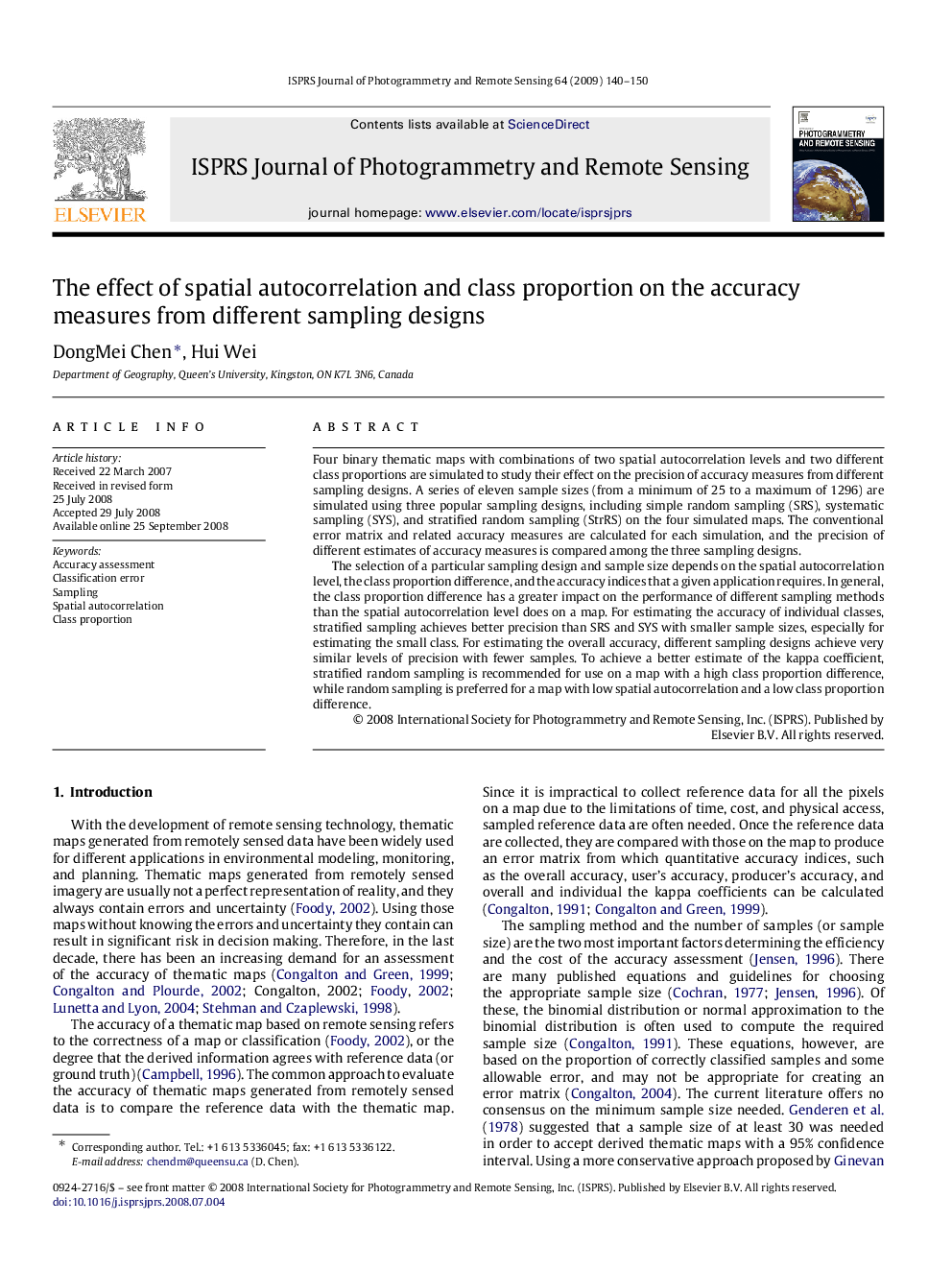| Article ID | Journal | Published Year | Pages | File Type |
|---|---|---|---|---|
| 557410 | ISPRS Journal of Photogrammetry and Remote Sensing | 2009 | 11 Pages |
Four binary thematic maps with combinations of two spatial autocorrelation levels and two different class proportions are simulated to study their effect on the precision of accuracy measures from different sampling designs. A series of eleven sample sizes (from a minimum of 25 to a maximum of 1296) are simulated using three popular sampling designs, including simple random sampling (SRS), systematic sampling (SYS), and stratified random sampling (StrRS) on the four simulated maps. The conventional error matrix and related accuracy measures are calculated for each simulation, and the precision of different estimates of accuracy measures is compared among the three sampling designs.The selection of a particular sampling design and sample size depends on the spatial autocorrelation level, the class proportion difference, and the accuracy indices that a given application requires. In general, the class proportion difference has a greater impact on the performance of different sampling methods than the spatial autocorrelation level does on a map. For estimating the accuracy of individual classes, stratified sampling achieves better precision than SRS and SYS with smaller sample sizes, especially for estimating the small class. For estimating the overall accuracy, different sampling designs achieve very similar levels of precision with fewer samples. To achieve a better estimate of the kappa coefficient, stratified random sampling is recommended for use on a map with a high class proportion difference, while random sampling is preferred for a map with low spatial autocorrelation and a low class proportion difference.
